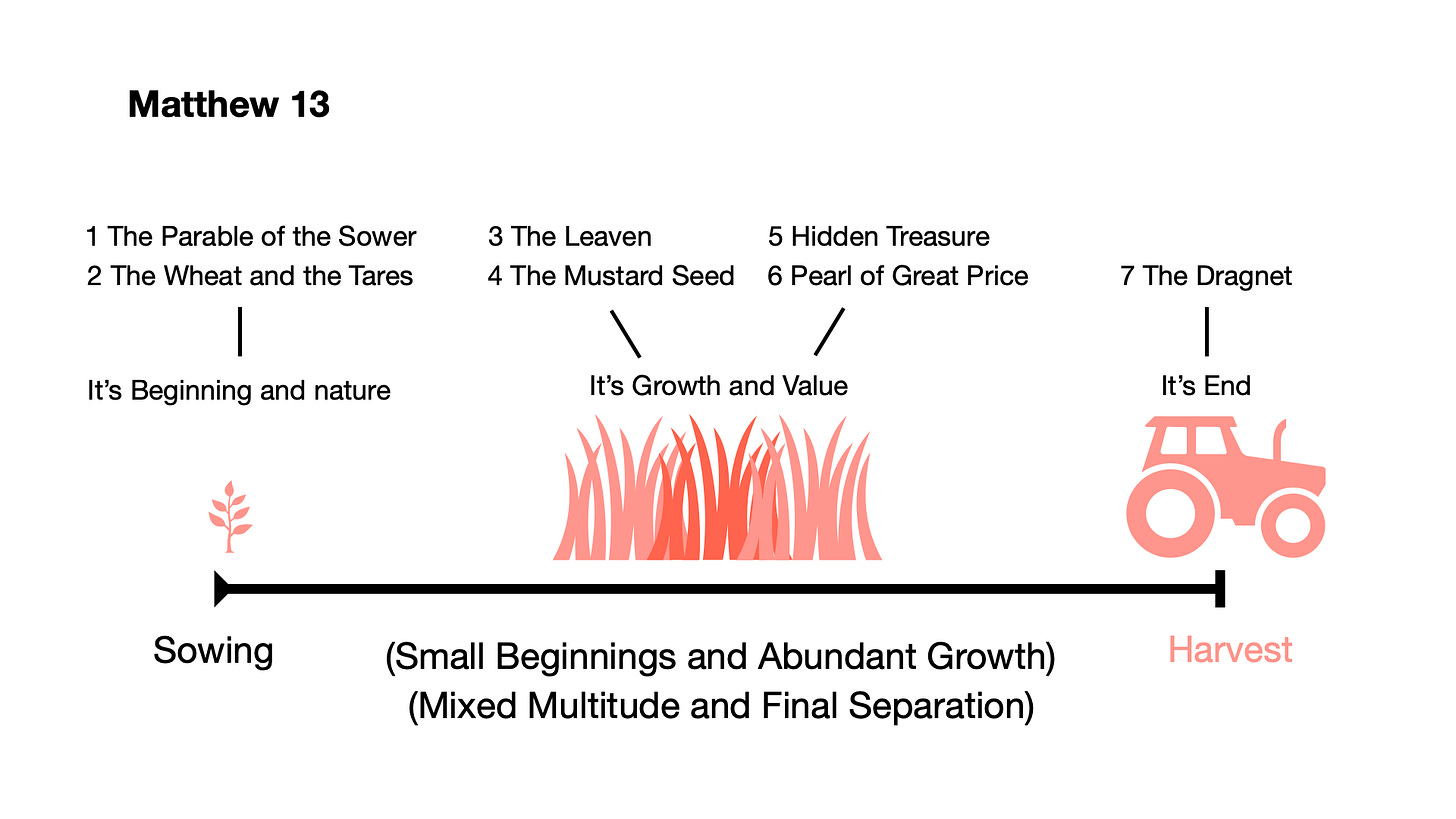Recently I was able to share with a group of local pastors about optimistic eschatology. Many of them were from charismatic backgrounds and had never heard about the older teachings which fueled many of the early missionaries to Africa and India. The presentation was greatly received and generated much friendly discussion along with a few emails afterwards.
How would you explain the optimistic view of eschatology? Passages like 1 Corinthians 15 or Revelation 20 provide a simple framework yet I chose to begin with Jesus’ parables in Matthew 13. Why? Because the millennial reign of Revelation 20 is what Jesus called the Kingdom or Reign of Heaven in His parables (kingdom = reign or rule).
Two parables give us a simple framework to understand Jesus teaching on the end times; the parable of the weeds (Matt 13:24-30) and the parable of the dragnet (Matt 13:47-50).
In both parables there is a gathering together of good and bad which remain together until the final sorting at the end. The wheat and tares grow together and are separated at harvest, the dragnet gathers fish of all kinds which are sorted at the end.
Now at the final sorting do we expect that there will be more wheat than tares? More good fish than bad? The optimist says exactly so; after all our Lord is the master fisherman. In the parable of the sower we are explicitly told that the seed on the good soil will grow abundantly (some 30x, 60x, 100x). So expecting an abundant harvest of wheat cannot be out of the picture! This becomes even more certain when we look at the other parables in Matthew 13; the Mustard Seed and the Leaven hidden in the flour. In one we see the abundant growth of the seed into the greatest of trees and the other the far reaching influence of the leaven so that the bread completely rises. The image of the great tree is taken from the description of King Nebuchadnezzar’s kingdom in Daniel 4:20-22 and the leaven hidden in three measures of flour points back to the feast served to God by Abraham and Sarah in Genesis 18:6. The Kingdom of Christ will far exceed the glories and extent of Nebuchadnezzar so that all the world might become a feast ready for our Lord.
Looking at the chapter as a whole we can also discern the common flow leading to the end. Jesus gives us two parables which speak of the Kingdom’s beginning, two parables which speak of it’s growth and influence, two parables which speak of it’s ultimate value, and a final parable which speaks of it’s end.
In this simple way Jesus has given us a framework of what we should look for leading up to the final judgment. His kingdom should have abundant growth and influence in the world. When the net is full (vs48) the day of judgment will come and sort everyone out. So what do you think? In the end will there be more wheat than tares? More good fish than bad? Perhaps at least we could agree that an abundant growth cannot be a small number!
In the next post I want to continue exploring Jesus’ teaching in the parables of Matthew 21-22, and then again of Matthew 24-25. These later parables continue this same flow but also speak of judgment and transition at the beginning.








Amen!!!